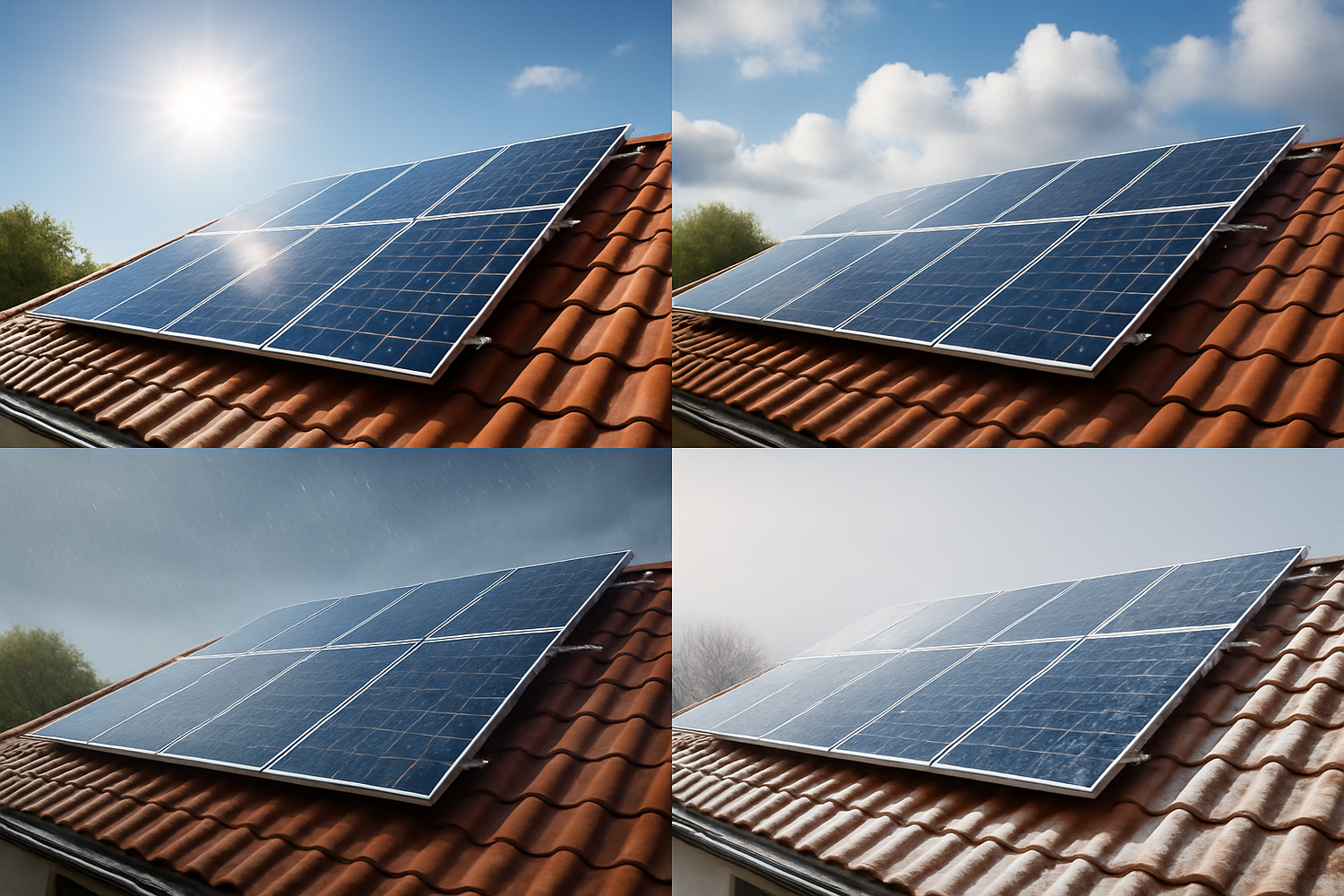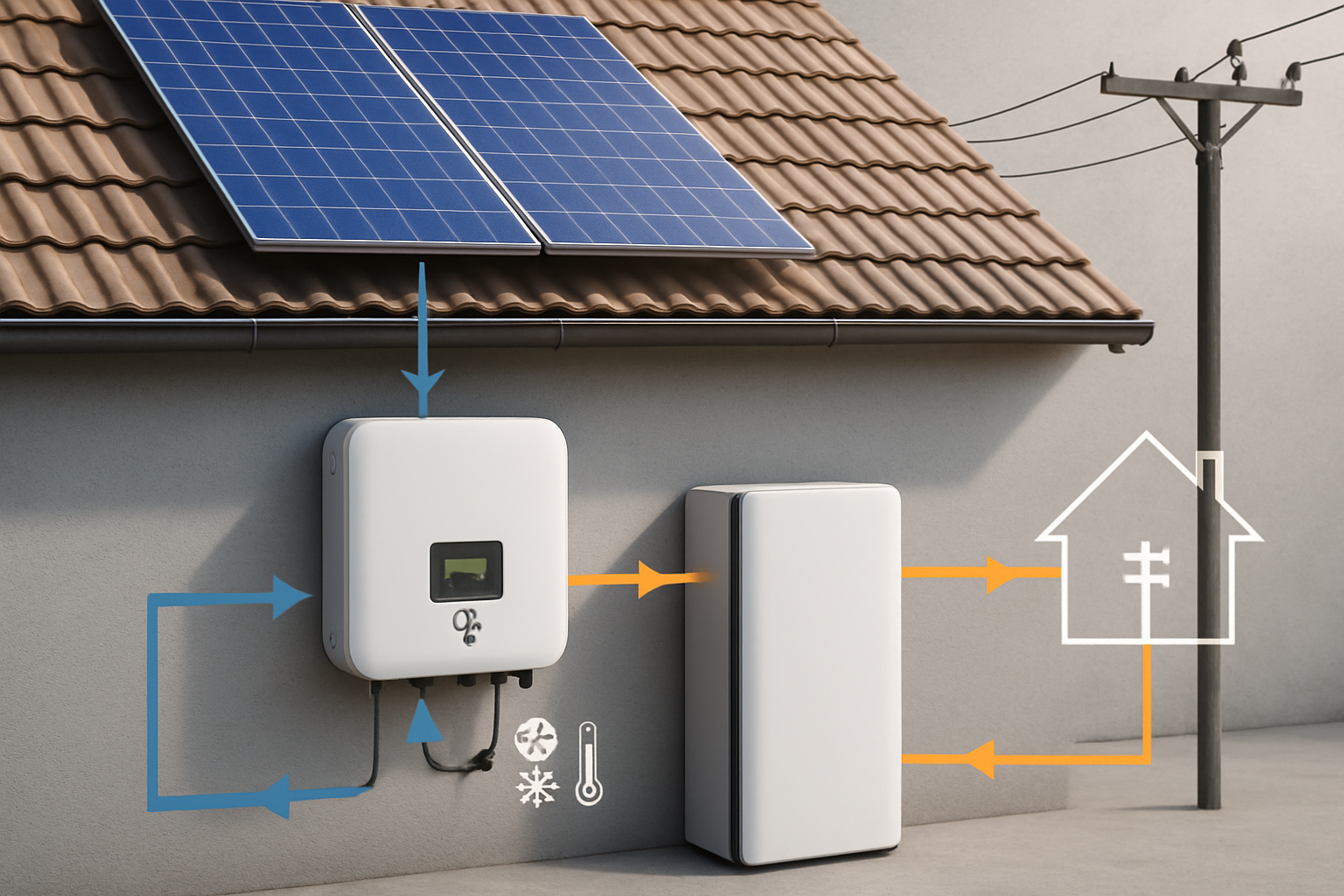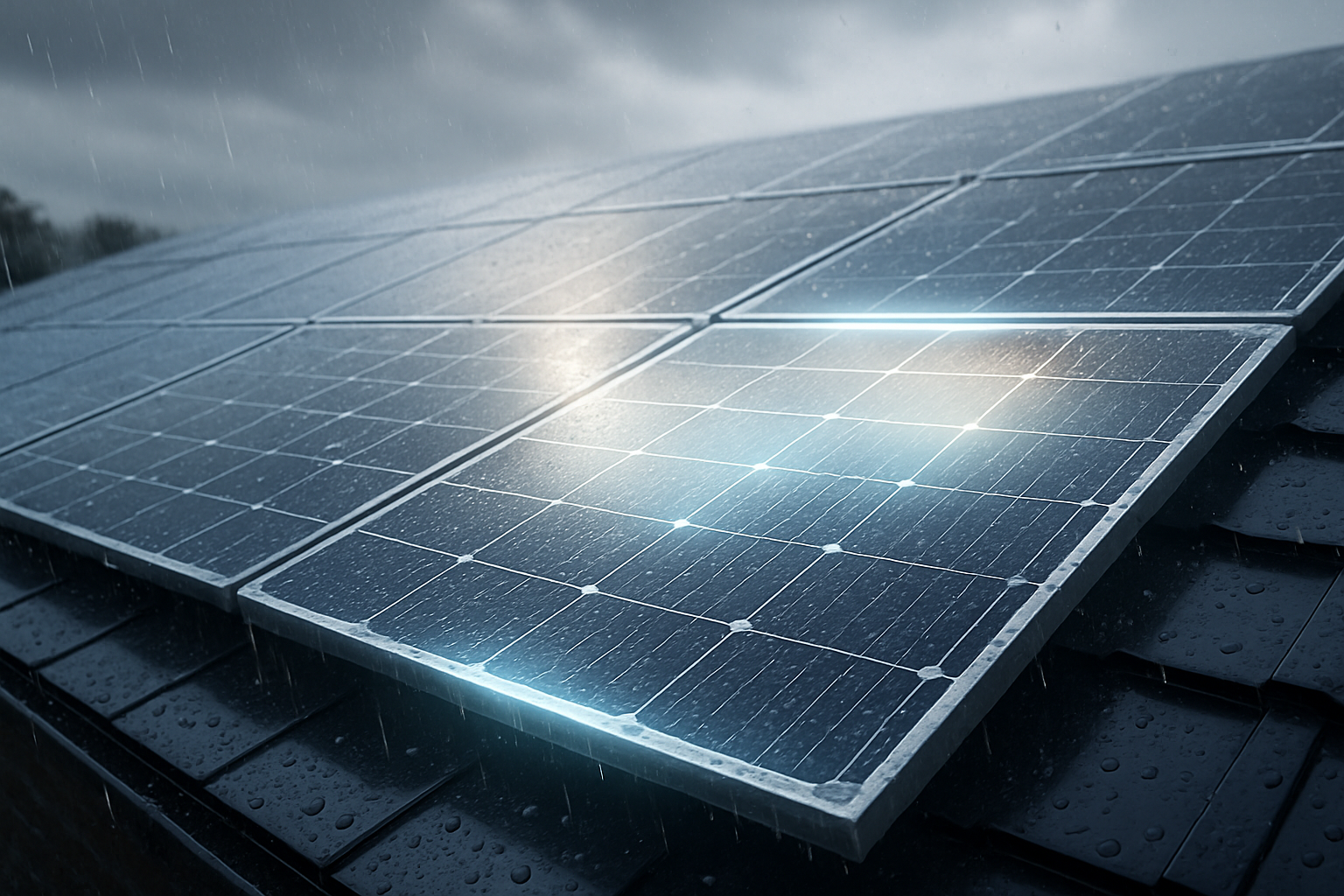Harnessing energy from the sun offers a powerful path to energy independence. Yet, questions often arise about how solar panels perform when the sun is not shining brightly, or during different times of the year. You may wonder if clouds, rain, or winter's chill significantly impact your system's ability to generate electricity. This article provides a clear look at how various environmental conditions affect solar energy output. We also explore how modern technology, including advanced solutions from ANERN, ensures consistent and reliable solar power, no matter the forecast.
ANERN brings years of experience in the solar and energy storage industry. We specialize in manufacturing high-performance lithium batteries, developing integrated energy storage systems (ESS), and providing complete off-grid solar solutions. Our commitment is to deliver reliable and scalable energy solutions, empowering you to achieve true energy independence.
Understanding Solar Panel Fundamentals and Efficiency
Solar panels convert sunlight into usable electricity through the photovoltaic effect. This process relies on photons from the sun striking semiconductor materials within the panels, dislodging electrons, and creating an electric current. The effectiveness of this conversion is measured by two key metrics: efficiency and capacity factor.
Efficiency: Converting Sunlight to Electricity
Panel efficiency refers to the percentage of sunlight a solar panel converts into electricity. Most commercially available solar panels offer efficiency ratings between 15% and 22%, with some premium models reaching higher levels. These ratings are typically determined under Standard Test Conditions (STC), which include a panel temperature of 25°C (77°F) and specific solar irradiance levels. Real-world conditions often differ from STC, leading to variations in actual output.
Capacity Factor: Real-World Output
The capacity factor of a solar system indicates its actual energy output over a period, compared to its maximum possible output if it ran at full power constantly. For solar photovoltaic (PV) systems, capacity factors typically range from 10% to 25%. This ratio is influenced by factors such as the intensity of sunlight, weather patterns, and panel orientation. For instance, the average US utility-scale solar generation fleet had a 24.2% capacity factor from January through December 2022.
Weather's Direct Impact on Solar Output
Weather conditions significantly influence how much electricity your solar panels produce. Understanding these effects helps manage expectations and optimize system performance.
The Role of Temperature
Many assume solar panels perform best in extreme heat. However, solar panels operate most efficiently at cooler temperatures. The optimal temperature for a solar panel is around 25°C (77°F). As the temperature of a solar panel rises above this optimal point, its efficiency decreases. A typical crystalline silicon solar panel may lose 0.3% to 0.5% of its efficiency for every 1°C increase above 25°C. This reduction occurs because higher temperatures increase the energy of electrons within the solar cell, which can reduce the cell's open-circuit voltage.
Conversely, solar panels can perform above their rated efficiency in colder conditions. For example, at 0°C (32°F), a panel might produce 5-7% more power than its rated output. This is because lower temperatures improve the material conductivity of the semiconductors. Factors like ambient air temperature, solar irradiance, and wind speed all influence a panel's operating temperature. Wind, for instance, can help cool panels, potentially improving efficiency.
Consider the following table for a general idea of temperature's impact:
| Panel Temperature | Impact on Efficiency (relative to 25°C) | Notes |
|---|---|---|
| Below 25°C (e.g., 0°C) | Increased (e.g., 5-7% higher) | Improved material conductivity, higher voltage output. |
| 25°C (77°F) | Optimal Efficiency | Standard Test Conditions (STC) reference. |
| Above 25°C (e.g., 60°C) | Decreased (e.g., 10-15% lower) | Reduced open-circuit voltage, semiconductor material less efficient. |
Clouds, Rain, and Fog
Solar panels continue to generate electricity on cloudy or rainy days, though at a reduced rate. They utilize diffused sunlight that passes through the cloud cover. On days with partial clouds, solar panels might produce 10% to 25% less power. When the sky is fully covered, energy production could fall by up to 90%. Even very cloudy days typically allow for 10-30% of standard energy production.
Rain, while reducing immediate output, offers a valuable benefit: it helps clean the solar panels. Rainwater washes away accumulated dust, dirt, and debris, which can otherwise block sunlight and decrease power output. This natural cleaning maintains optimal panel surfaces for better absorption of solar radiation. For more details, you may find Do Clouds and Rain Really Cripple Your Solar Panels? and Myth vs Reality: Solar in Clouds, Cold, and Heat helpful.
Snow and Other Conditions
Snow accumulation on solar panels can significantly hinder their efficiency by blocking sunlight. However, modern panels are often designed to be snowproof, allowing them to perform well even with snowfall. The dark surface of solar panels can also absorb some solar radiation, leading to snowmelt and panel clearing. Hail, while seemingly a threat, rarely damages solar panels. They are built with durable materials designed to withstand harsh outdoor conditions.
Wind generally does not alter the solar radiation reaching the panels, so its direct effect on power generation is minimal. However, strong winds can pose a risk of physical damage if panels are not securely installed. Advanced fitting techniques ensure panels remain stable even in extreme wind conditions. For further expert perspectives, explore Do Rain, Fog, or Snow Ruin Rooftop PV? Expert Answers.

Seasonal Fluctuations in Solar Energy Production
The changing seasons bring variations in daylight hours and the sun's angle, which directly affect solar energy production.
Summer Performance: High Sun, High Heat
Summer days offer the longest hours of daylight and abundant sunshine, which might suggest peak solar production. While panels operate for more hours, the high ambient temperatures can lead to a decrease in efficiency. As discussed, solar panels perform best around 25°C. In direct sunlight during summer, panel temperatures can reach 60-65°C (140-150°F) or higher, causing a notable drop in power output compared to their rated efficiency.
Despite this, summer typically remains the period of highest overall energy generation due to extended daylight. Strategic system design and proper ventilation can help mitigate the effects of heat. For tips on maximizing output during warmer periods, consider 5 Proven Ways to Boost PV Output in Heat Waves.
Winter Performance: Shorter Days, Lower Sun
Winter presents the most significant challenges for solar energy production. Days are shorter, reducing the total hours of sunlight. Additionally, the sun's angle is lower in the sky, especially at higher latitudes, meaning sunlight hits the panels less directly. This combination leads to a substantial decrease in energy output. Solar panels can produce 40-60% less energy in December and January compared to July and August. In some regions, winter output can be reduced by as much as 80% compared to summer months.
Despite these reductions, solar systems remain functional. The cooler temperatures in winter can actually boost individual panel efficiency when sunlight is available. Designing a system with energy storage can significantly offset lower winter production. Explore how to prepare for colder, cloudier periods with Stop Worrying: Design PV + Storage for Cloudy Winters.
Transitional Seasons: Spring and Autumn
Spring and autumn often provide excellent conditions for solar performance. These seasons typically offer a balance of moderate temperatures and reasonable daylight hours. The cooler temperatures prevent the efficiency losses seen in summer, while the sun's angle is still favorable for good energy capture. Many systems experience strong output during these transitional months. To learn more about seasonal output, you may refer to Seasonal Solar FAQ: Output in Winter, Monsoon, and Summer.
Building Resilient Solar Systems for All Conditions
While weather and seasons influence solar output, advanced technology and smart system design ensure reliable energy generation year-round. ANERN offers comprehensive solutions built on years of industry experience.
The Role of Advanced Technology
The core components of a solar energy system play a critical role in its performance and resilience.
- Solar Panels: Modern solar panels, such as ANERN's N-Series, incorporate technologies like half-cut cells and bifacial modules. These advancements improve light trapping and current collection, enhancing module power output and reliability. Our N-type modules can absorb sunlight from both sides, significantly improving power output and efficiency, reaching up to 22.45%.
- ANERN Solar Inverters: Inverters convert the direct current (DC) electricity from solar panels into alternating current (AC) for home use or the grid. ANERN's solar inverters, including our hybrid models, feature Maximum Power Point Tracking (MPPT) technology. This optimizes energy conversion efficiency based on real-time output, maximizing the use of solar resources even in unstable lighting. Our inverters offer pure sine wave output, strong compatibility with various appliances, and dual output modes. Some ANERN hybrid inverters can even operate without a battery, directly supplying power to the load from solar panels, which can reduce overall system costs.
- ANERN Lithium Batteries (LiFePO4): Energy storage is crucial for managing the variability of solar power. ANERN specializes in Lithium Iron Phosphate (LiFePO4) batteries, known for their high performance, safety, and reliability. These batteries offer superior energy density, allowing for more compact installations without sacrificing capacity. They boast a long cycle life, often exceeding 6,000 deep cycles, and maintain high efficiency throughout their lifespan. ANERN's LiFePO4 batteries are designed with intelligent Battery Management Systems (BMS) that protect against overcharging, deep discharge, and short circuits, enhancing both safety and performance. Their temperature resilience ensures stable operation across diverse climates, from hot summers to cold winters.
Integrated Energy Storage Systems (ESS)
To provide reliable power during periods of low sunlight or grid outages, integrated energy storage systems are essential. ANERN's all-in-one stackable ESS solutions seamlessly combine hybrid solar inverters and lithium battery storage. These modular systems are highly efficient and designed for both residential and commercial use. They offer intelligent energy management, optimizing energy use based on real-time conditions and ensuring stored energy is available when needed. This integration simplifies installation and ensures component compatibility, providing a reliable, scalable, and cost-effective way to harness solar power. Such systems are vital for managing the inherent variability and uncertainty of solar generation, helping to ensure resource adequacy for the grid. Learn more about integrated solutions in Weather-Ready Solar Blueprint: Panels, Inverters, ESS and how storage addresses inverter derating in Why Heat Derates Inverters, and How Storage Helps.
Strategic System Design and Management
Beyond individual components, the overall design and ongoing management of your solar system are paramount.
- Optimizing Tilt and Orientation: Proper panel orientation and tilt angle maximize sunlight exposure throughout the year. For most locations in the Northern Hemisphere, panels facing south with a tilt angle close to the local latitude generally yield optimal annual performance. Adjustments can be made to favor winter or summer production based on specific energy needs.
- Monitoring and Maintenance: Regular monitoring helps track system performance and identify any issues promptly. Cleaning panels, especially after dusty periods or snowfall, helps maintain peak efficiency.
- ANERN Off-Grid Solar Solutions: For homes, farms, or cabins beyond the reach of traditional power grids, ANERN offers robust off-grid solar solutions. These self-sufficient setups, combining solar panels, batteries, and inverters, deliver reliable electricity, eliminating reliance on unstable fuel supplies and empowering energy independence. We provide tailored systems that ensure your home is powered efficiently and reliably, reducing your reliance on utility companies and lowering energy costs.
A Forward Look
Solar energy technology continues to advance, offering increasingly robust and adaptable solutions. While weather and seasonal changes naturally influence solar panel output, these variations are manageable with intelligent system design and advanced components. The integration of high-performance solar panels, efficient inverters, and reliable energy storage systems creates resilient energy solutions. ANERN is proud to contribute to this evolution, providing lithium battery manufacturing, ESS development, and off-grid solar solutions that empower individuals and communities to achieve sustainable energy independence, regardless of the climate or season.





Leave a comment
All comments are moderated before being published.
This site is protected by hCaptcha and the hCaptcha Privacy Policy and Terms of Service apply.